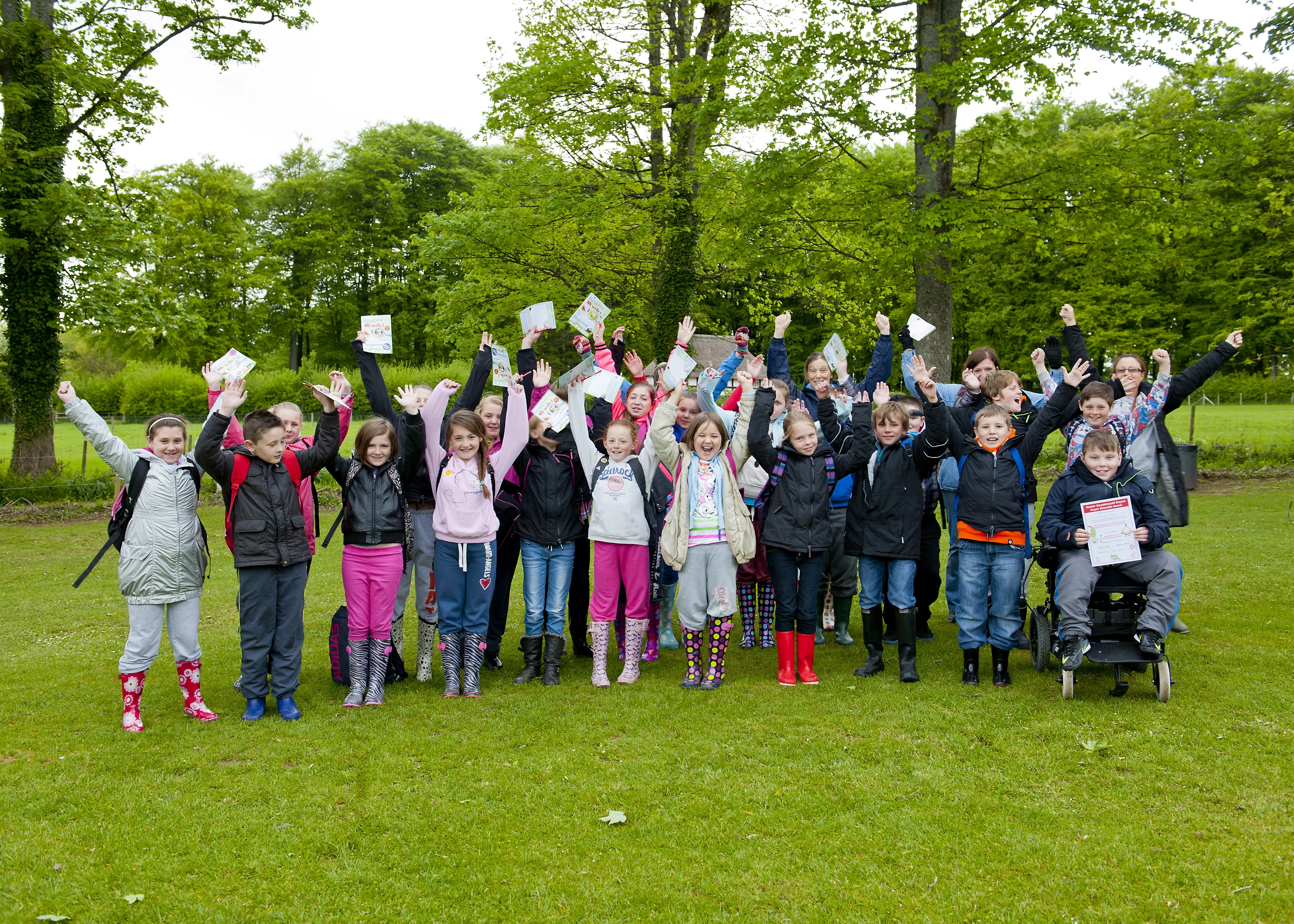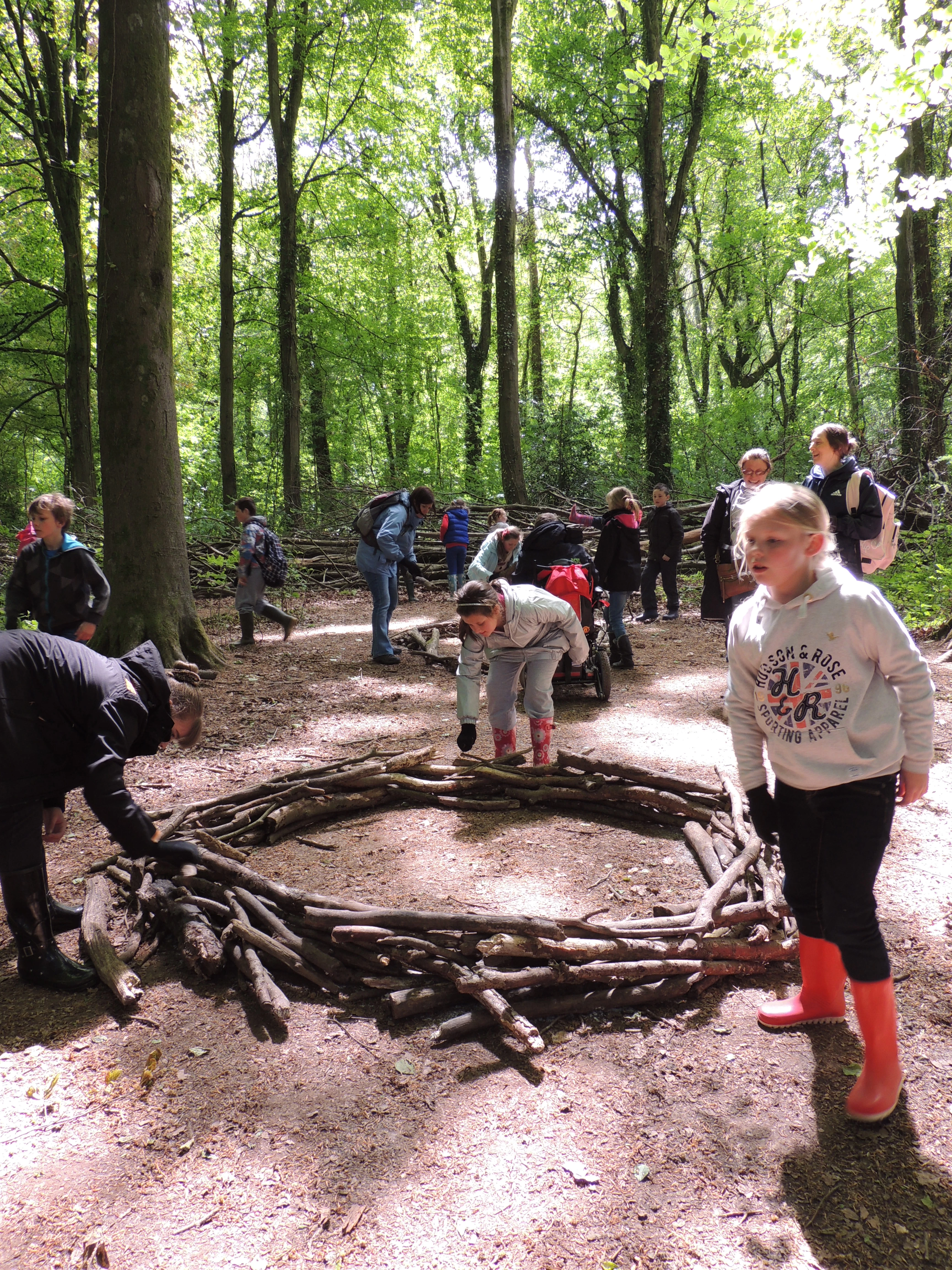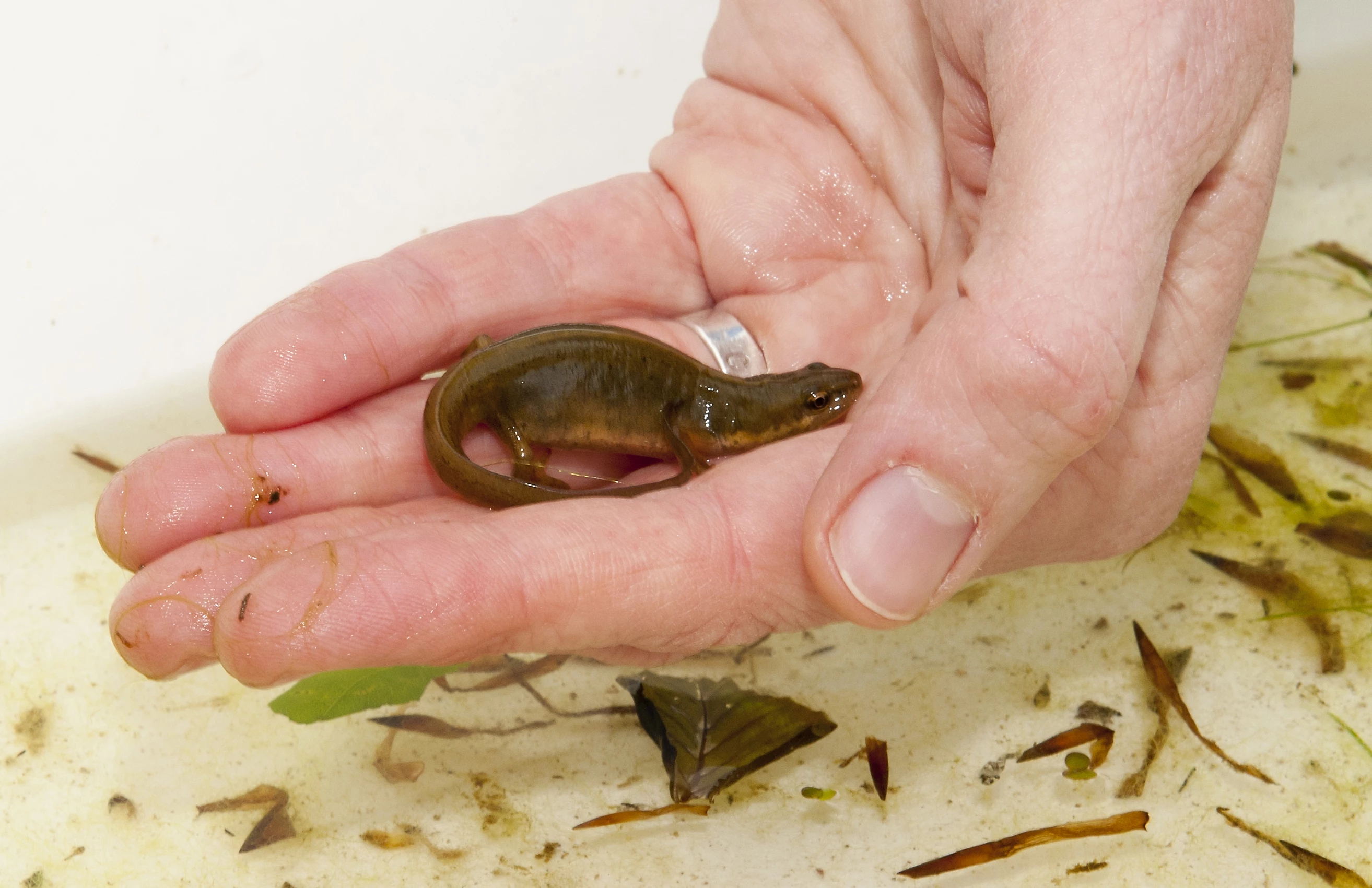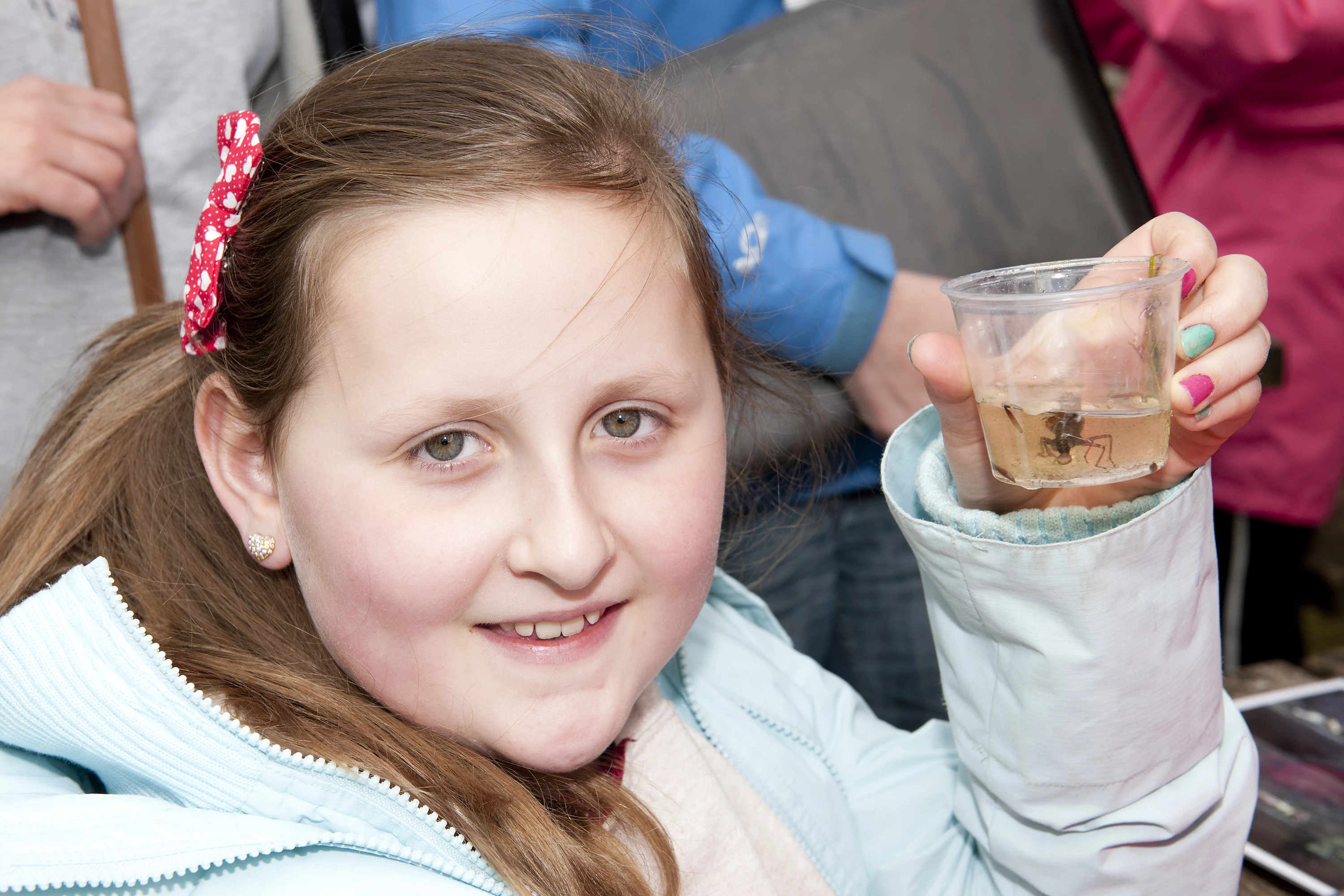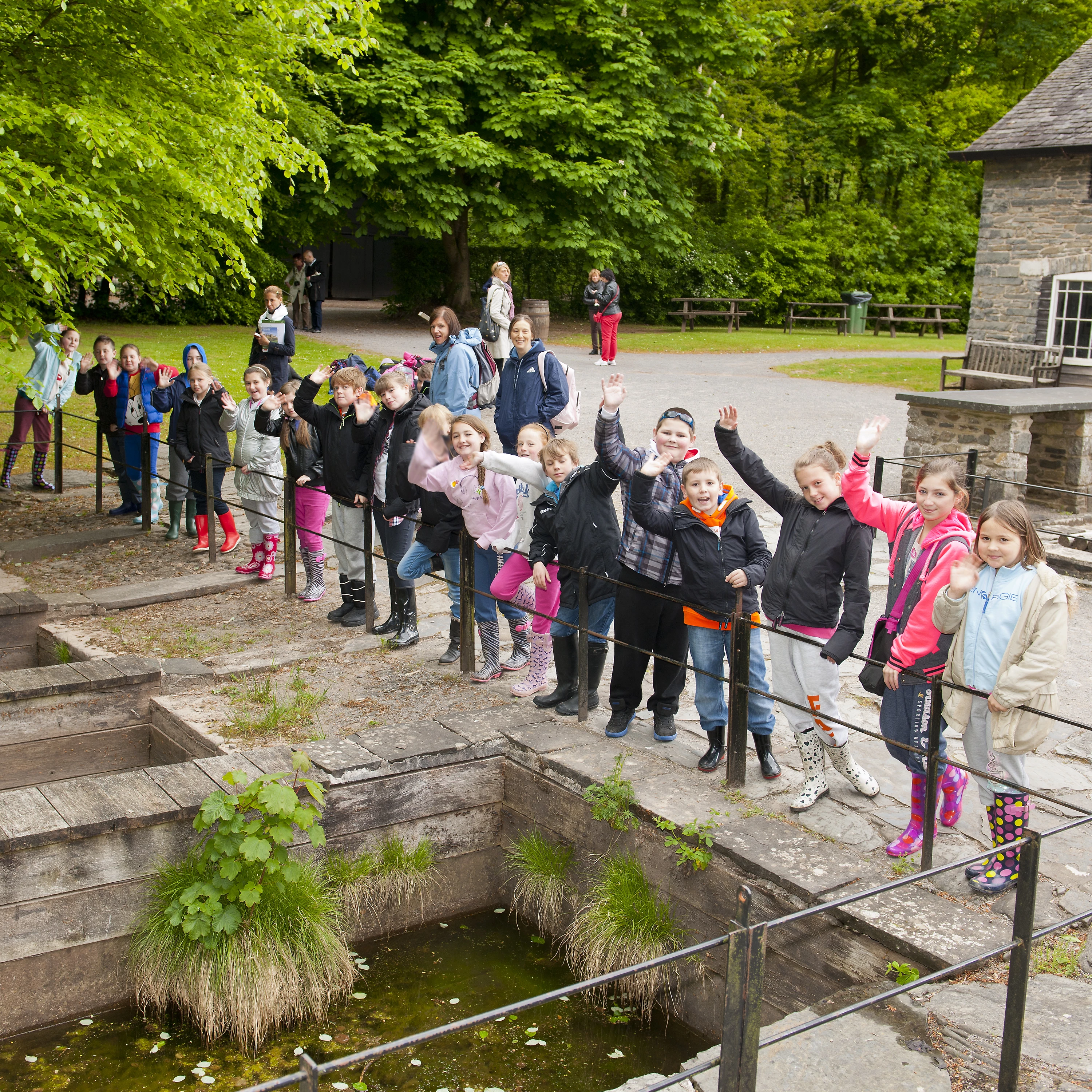I don’t know about you, but I cannot believe how quickly August flew by! It seems as if it was only yesterday that schools were breaking up, but now it is already time for us to welcome school visits again for a brand new school year!
This summer was slightly different for myself in St Fagans. Due to the redevelopment project we have lost use of the Tŷ Gwyrdd eco house, so our summer events this year had a slightly more nomadic feel than normal! It was nice to visit other parts of the museum and to explore some of the wildlife found in different places.
In total this summer, around 1000 people took part in a variety of nature activities within the museum, from minibeast bug hunts in the woods to our very popular twilight bat walks around the site.
The summer began with us re-opening the bird hide at its new location near Hendre Wen barn. After initial worries of whether we would attract similar numbers of birds as the previous location, I was very relieved after spending 30 minutes in the hide and spotting 11 different species. Hopefully we will continue to attract such a wide variety of birds to our feeders. The bird hide is open every day, so on your next visit be sure to pop in and see what you spot!
In August we had a bit of a bat scare at the Tannery. The Tannery building is home to a roost of rare Lesser Horseshoe bats. A small electrical fire broke out one morning in the room directly below the roof space where the bats normally roost. Thankfully a quick response from South Wales Fire and Rescue Service ensured that the fire did not spread. Luckily, the bats had flown to an area of the building unaffected by the fire. The story even made it onto the BBC website! Thanks to Anwen for the pictures!
The bats have now returned to their normal roosting spot and they seem to have been largely unaffected by the event. Unfortunately, the same can’t be said for our bat camera which is situated in the building. A combination of smoke and water damage means that we will have to replace the camera, which we will be doing as soon as possible!
Bats at St Fagans seem to be going from strength to strength. We have 11 of the 18 British species known roosting within the museum grounds, including the elusive Nathusius Pipistrelle bat which has been found roosting in 2 of our buildings. Previous to this, there were only 2 known roosting locations for this species in the whole of Wales. This story also made the news recently!
This year we held 3 Twilight Batwalks, all of which booked up well in advance. Thanks to all who came and apologies to anyone who tried to book but were unable to! Next year we are planning on having 4 walks throughout August, with the possibility of more depending on demand! If you came on one of our batwalks, or took part in any nature events this summer, please let us know what you though, either by commenting here or sending an us an email!
Finally a big thanks to our new team of volunteers who helped out over the summer! Having an extra pair or two of hands during workshops and events is invaluable and means that we can offer a better experience to our visitors. I look forward to working with you again in the near future!




